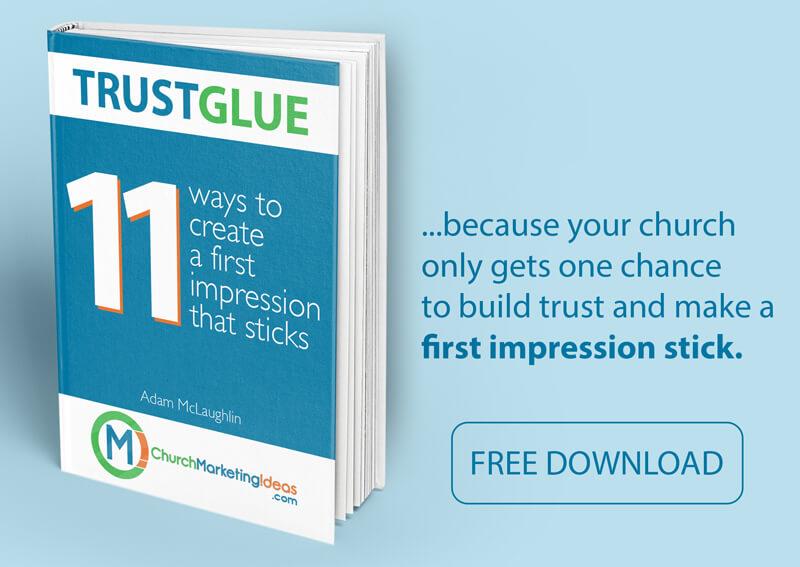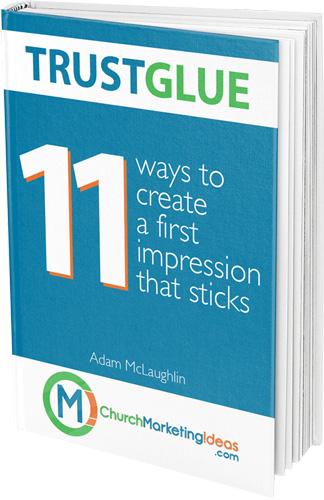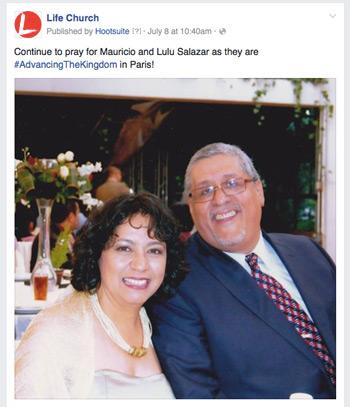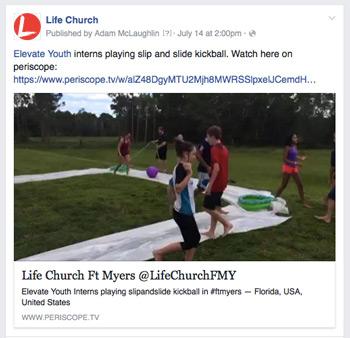Remember when you were little and playing a game with the neighbour kids, then they change the rules and say “oh yeah, I forgot to tell about…” or if you’re learning a new game with some friends and they say “I’ll start with the basic rules so we can get the game going, and I’ll fill you in as we go on the details.”
 I get frustrated in a situation when I can’t contribute my best because the parameters aren’t clear, and when it comes to our creative meetings, our team has found some really effective ways to maximize our productivity and effectiveness in a short amount of time – the reason: we’ve all agree to play by the rules.
I get frustrated in a situation when I can’t contribute my best because the parameters aren’t clear, and when it comes to our creative meetings, our team has found some really effective ways to maximize our productivity and effectiveness in a short amount of time – the reason: we’ve all agree to play by the rules.
These rules are not meant to limit participation (like saying you can’t touch the soccer ball with your hands) but are rather to give us a clear playing field so we can get to (in my opinion) the fun part of brainstorming and creating an execution strategy.
This list is not the 9 ways to have a perfect meeting, or 9 ways your team has to do it. Each team is different, has different players and is playing a different game (if I may continue that analogy). Take these ideas and figure out what they look like for your team, how they get applied and what your team needs to add to be most effective.
You may be asking “Adam, what does this have to do with marketing?” My answer would be that effective meetings will help you achieve results. Not sure what I mean? Try these on with your team…
I’d love to hear how you’ve implemented these or what you’ve added. Comment in our Church Marketing Ideas Facebook group!
1. Invite only the relevant players
If you’re playing football, and it’s the offensive line on the field, don’t invite the defence to the party. If your conversation requires one person, have a one-on-one meeting. If your conversation requires everyone on your team except one person, honor that persons time and let them know why you’re not bringing them in if necessary, but don’t bring them in to sit in an irrelevant meeting. If you have a set meeting where everyone on your team comes together, then only discuss issues relevant to everyone, and save the others for later.
2. Have an Agenda
Be clear about what you want to discuss and who needs to be in the discussion about those topics. Be clear about the order. Decide that information before you call the meeting. Sometimes you may want to share that agenda before the meeting, and sometimes it’s relevant to get everyones initial reactions at the same time. Whether you share it ahead or not, have an agenda.
3. Start on Time and End on Time
 I find it odd that we used to talk about when the meeting would start, but not have a clear plan about when the meeting would end. Based on inviting the right people and having an agenda, take a guess at how long the meeting will be and set an end time… this way people can schedule their next appointment or goals and tasks for the day after that meeting.
I find it odd that we used to talk about when the meeting would start, but not have a clear plan about when the meeting would end. Based on inviting the right people and having an agenda, take a guess at how long the meeting will be and set an end time… this way people can schedule their next appointment or goals and tasks for the day after that meeting.
When that time arrives, END ON TIME! If there is more discussion to be had, book a follow up meeting with some or all of the relevant people.
4. Everybody contributes
If you’ve hand-picked who will be in the meeting, they’re here for a reason. Everybody contributes. We have some people on our team who are louder and some quieter. Some who process out loud and some who sit and think. Some people who want their opinion to be considered, and others who are happy to find a way to support whatever decision is made. Regardless of those factors, everybody contributes. After discussion and when a decision has to be made, go around the table and ask everyone what they’re suggestion is.
If you have a team member who likes to process, ask them last, once they’ve heard everyone else’s input. “Whatever the team decides” is not contributing, because if that’s your answer, you didn’t need to be in the decision meeting.
You could help that person by asking “If the decision was yours, what would you choose?” or if they say “I pretty much agree with everyone” then ask “How do you see yourself participating in implementing.” or “What would it look like if we made a different decision?” Learn to hear what’s not being said and draw the input out of that person. They have a unique perspective that is valuable to the team.
5. Leave with an action plan
Your meeting has a purpose. It is probably meant to change something or cause an action. Write down what your action is, who is responsible for completing what portions and by when they will have it completed. Have everyone articulate back to you what their action is so that you’re clear.
6. Review the last meeting’s action plan
There’s no point in making an action plan in this meeting if we’re not going to be sure those actions got completed. This isn’t an opportunity to come down on someone who hasn’t completed their task, but an opportunity to celebrate the completed tasks, help overcome hurdles that could have prevented previous tasks and be clear on what now needs to be achieved to move forward.
7. Nobody leaves confused
 If you’re not sure of what the play is, don’t leave the huddle. This is each team member’s opportunity to clarify the action, the responsibility and the “by when”. If anyone is unsure on the motive, the big picture, the small details, the timeline, the key players or what’s expected of them, this is the time to ask.
If you’re not sure of what the play is, don’t leave the huddle. This is each team member’s opportunity to clarify the action, the responsibility and the “by when”. If anyone is unsure on the motive, the big picture, the small details, the timeline, the key players or what’s expected of them, this is the time to ask.
Being sure doesn’t mean that everyone is on the same page… I could be 100% sure I heard something that you didn’t say, and you could be 100% sure I heard what you said. Being sure isn’t being clear.
Ask you team to summarize their understanding of the action plan and listen for hints that someone isn’t entirely clear.
8. What happens in the room stays in the room
Sometimes conversations go beyond the topic and sometimes they become emotional. We’ve agreed that we won’t hold someone’s actions or opinions for ammunition at a future time and we won’t undermine the public conversation with private conversations later. This trust allows us to be honest, admit our flaws, come up with genuine raw ideas and create an opportunity to be ourselves.
9. Get clear with everyone before the meeting
If someone said or did something in the meeting, at the water cooler or in an email or text message that didn’t sit right with you, ask them to clarify, get on the same page with them and come to the meeting clear. The last thing we need in our discussion about a website overhaul is to have a couple of people on about last Friday’s “Photocopier incident” or that they needed an elastic and someone had taken the last one in the drawer, or worse yet is having 2 people silently fuming toward each other and not able to draw them in to contribute to the conversation. You don’t have to go look for problems and then create resolves, but if there’s an unmet expectation of someone else on the team, we get that cleared up with them privately so we can contribute our best to the group.
I would love to hear what else you have setup for your meeting, how you live by or reiterate your meeting rules, or by when you’ll choose to explore and implement meeting rules for your team! Leave a comment below, or track me down on twitter @Adam_McLaughlin


 Decide how many time you’re going to try posting on your church’s Facebook page. Discover if that’s how many times people want to hear from you. Then decide how you’ll adjust your Facebook frequency, and discover if that shows an improvement.
Decide how many time you’re going to try posting on your church’s Facebook page. Discover if that’s how many times people want to hear from you. Then decide how you’ll adjust your Facebook frequency, and discover if that shows an improvement. Decide what your values are. Discover how you can live those out so people will be receptive to them.
Decide what your values are. Discover how you can live those out so people will be receptive to them.


 Stories are often the foundation of marketing. They transmit a message in a more colorful way that can be appreciated by all audiences – old or young, male or female. Use digital signage to tell your stories.
Stories are often the foundation of marketing. They transmit a message in a more colorful way that can be appreciated by all audiences – old or young, male or female. Use digital signage to tell your stories.



 Are we aiming to provide information to our current members, or is the goal of our Social Media to reach and invite new people? This will help identify the content and the network you’d like to focus on. Start by considering the target audience of your church. If you’re not yet sure about that, here is a way to
Are we aiming to provide information to our current members, or is the goal of our Social Media to reach and invite new people? This will help identify the content and the network you’d like to focus on. Start by considering the target audience of your church. If you’re not yet sure about that, here is a way to  There is no shortage of Social Media networks and opportunities to spend time online. Refer back to your target audience. It’s easier to get out in the community on twitter (you can follow local organizations and comment on their tweets) or snapchat and it’s easier to provide information on Instagram of Facebook.
There is no shortage of Social Media networks and opportunities to spend time online. Refer back to your target audience. It’s easier to get out in the community on twitter (you can follow local organizations and comment on their tweets) or snapchat and it’s easier to provide information on Instagram of Facebook. What kind of community do you want to build, and how do you want to build it? Does your leadership want you to create an opportunity for people to take a strong stance or keep the waters calm? Will I post about the church’s stance on current issues, or do I stick to promoting upcoming events and ministries?
What kind of community do you want to build, and how do you want to build it? Does your leadership want you to create an opportunity for people to take a strong stance or keep the waters calm? Will I post about the church’s stance on current issues, or do I stick to promoting upcoming events and ministries? The answer could be “Yes, always…” or it may be “Yes, for now…” or maybe “no, just go for it and we’ll discuss as we go.” but as the person posting, don’t take it personal if it’s decided that your posts go through a second set of eyes before they go live. This helps you get an idea of what’s expected and how your ideas for advertising the church on Social Media represent the branding and marketing of your church.
The answer could be “Yes, always…” or it may be “Yes, for now…” or maybe “no, just go for it and we’ll discuss as we go.” but as the person posting, don’t take it personal if it’s decided that your posts go through a second set of eyes before they go live. This helps you get an idea of what’s expected and how your ideas for advertising the church on Social Media represent the branding and marketing of your church. Set the expectation and find out up front. Don’t submit once a week posts if your leader is hoping for daily posts. Don’t commit to daily posts on 4 networks if you’re a volunteer who can only commit to once a day. Have a discussion about what you’re capable of committing to and how close that comes to the expectations.
Set the expectation and find out up front. Don’t submit once a week posts if your leader is hoping for daily posts. Don’t commit to daily posts on 4 networks if you’re a volunteer who can only commit to once a day. Have a discussion about what you’re capable of committing to and how close that comes to the expectations. If another department in the church wants to have their own page (like kids or youth) who is ultimately responsible for their content? Who approves their posting, and do you have a minimum standard you want to maintain for content, image or video quality, etc?
If another department in the church wants to have their own page (like kids or youth) who is ultimately responsible for their content? Who approves their posting, and do you have a minimum standard you want to maintain for content, image or video quality, etc? My personal opinion is as much as possible to address a negative comment in a positive way… “We’re sorry your experience didn’t match our values. We would be happy to discuss a resolution if you’d call the office and ask to speak with…” but some times when a comment is vulgar or contains profanity, it’s clear that a phone conversation isn’t going to address the concern. In that case, I would just delete the comment. If the person persists, block them from your account. It’s not going to change their mind, and if they truly wish to make restitution, they’ll reach out in person – blocking them form Social Media probably won’t affect their change of heart.
My personal opinion is as much as possible to address a negative comment in a positive way… “We’re sorry your experience didn’t match our values. We would be happy to discuss a resolution if you’d call the office and ask to speak with…” but some times when a comment is vulgar or contains profanity, it’s clear that a phone conversation isn’t going to address the concern. In that case, I would just delete the comment. If the person persists, block them from your account. It’s not going to change their mind, and if they truly wish to make restitution, they’ll reach out in person – blocking them form Social Media probably won’t affect their change of heart. Quantifiable like ‘How many likes?’ or ‘How many followers?’ or ‘How Many interactions: comments or shares?’ not things like ‘To spread the Gospel’ or ‘To keep people informed’. Quantifiable goals allow you to discover what’s working, and what could change. The success of unquantifiable goals are a matter of opinion.
Quantifiable like ‘How many likes?’ or ‘How many followers?’ or ‘How Many interactions: comments or shares?’ not things like ‘To spread the Gospel’ or ‘To keep people informed’. Quantifiable goals allow you to discover what’s working, and what could change. The success of unquantifiable goals are a matter of opinion. There may be a great video on youtube that matches up with your current series topic or a funny quote from a famous preacher. What is the balance between finding other content and generating our own?
There may be a great video on youtube that matches up with your current series topic or a funny quote from a famous preacher. What is the balance between finding other content and generating our own? Specifically. Is there someone who is popular on Social Media but doesn’t line up with our beliefs? Is there something that could become a distraction from our goals? Do we address prayer requests in the church with permission, or is this not the forum?
Specifically. Is there someone who is popular on Social Media but doesn’t line up with our beliefs? Is there something that could become a distraction from our goals? Do we address prayer requests in the church with permission, or is this not the forum?
 I get frustrated in a situation when I can’t contribute my best because the parameters aren’t clear, and when it comes to our creative meetings, our team has found some really effective ways to maximize our productivity and effectiveness in a short amount of time – the reason: we’ve all agree to play by the rules.
I get frustrated in a situation when I can’t contribute my best because the parameters aren’t clear, and when it comes to our creative meetings, our team has found some really effective ways to maximize our productivity and effectiveness in a short amount of time – the reason: we’ve all agree to play by the rules. I find it odd that we used to talk about when the meeting would start, but not have a clear plan about when the meeting would end. Based on inviting the right people and having an agenda, take a guess at how long the meeting will be and set an end time… this way people can schedule their next appointment or goals and tasks for the day after that meeting.
I find it odd that we used to talk about when the meeting would start, but not have a clear plan about when the meeting would end. Based on inviting the right people and having an agenda, take a guess at how long the meeting will be and set an end time… this way people can schedule their next appointment or goals and tasks for the day after that meeting. If you’re not sure of what the play is, don’t leave the huddle. This is each team member’s opportunity to clarify the action, the responsibility and the “by when”. If anyone is unsure on the motive, the big picture, the small details, the timeline, the key players or what’s expected of them, this is the time to ask.
If you’re not sure of what the play is, don’t leave the huddle. This is each team member’s opportunity to clarify the action, the responsibility and the “by when”. If anyone is unsure on the motive, the big picture, the small details, the timeline, the key players or what’s expected of them, this is the time to ask.


 Share a recent picture or Facebook post from a missionary. Ask viewers to take a moment and pray for their ministry.
Share a recent picture or Facebook post from a missionary. Ask viewers to take a moment and pray for their ministry. Share a post from one of the other social media channels in your church (kids/youth/small groups)
Share a post from one of the other social media channels in your church (kids/youth/small groups)
